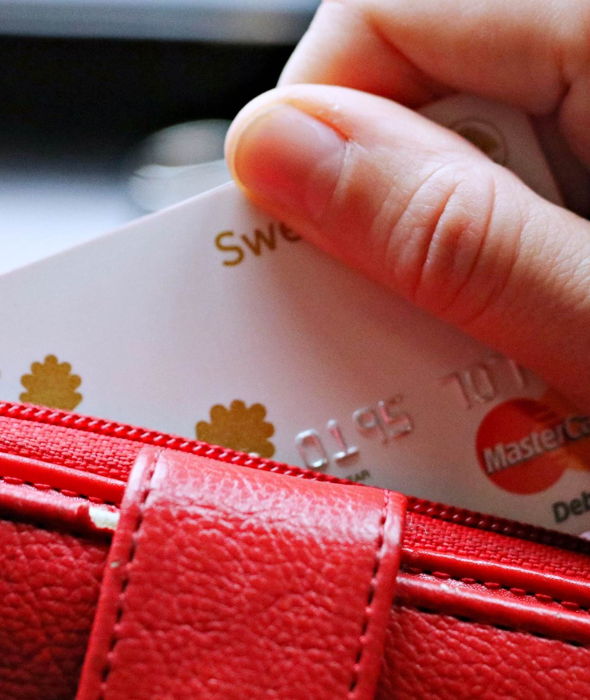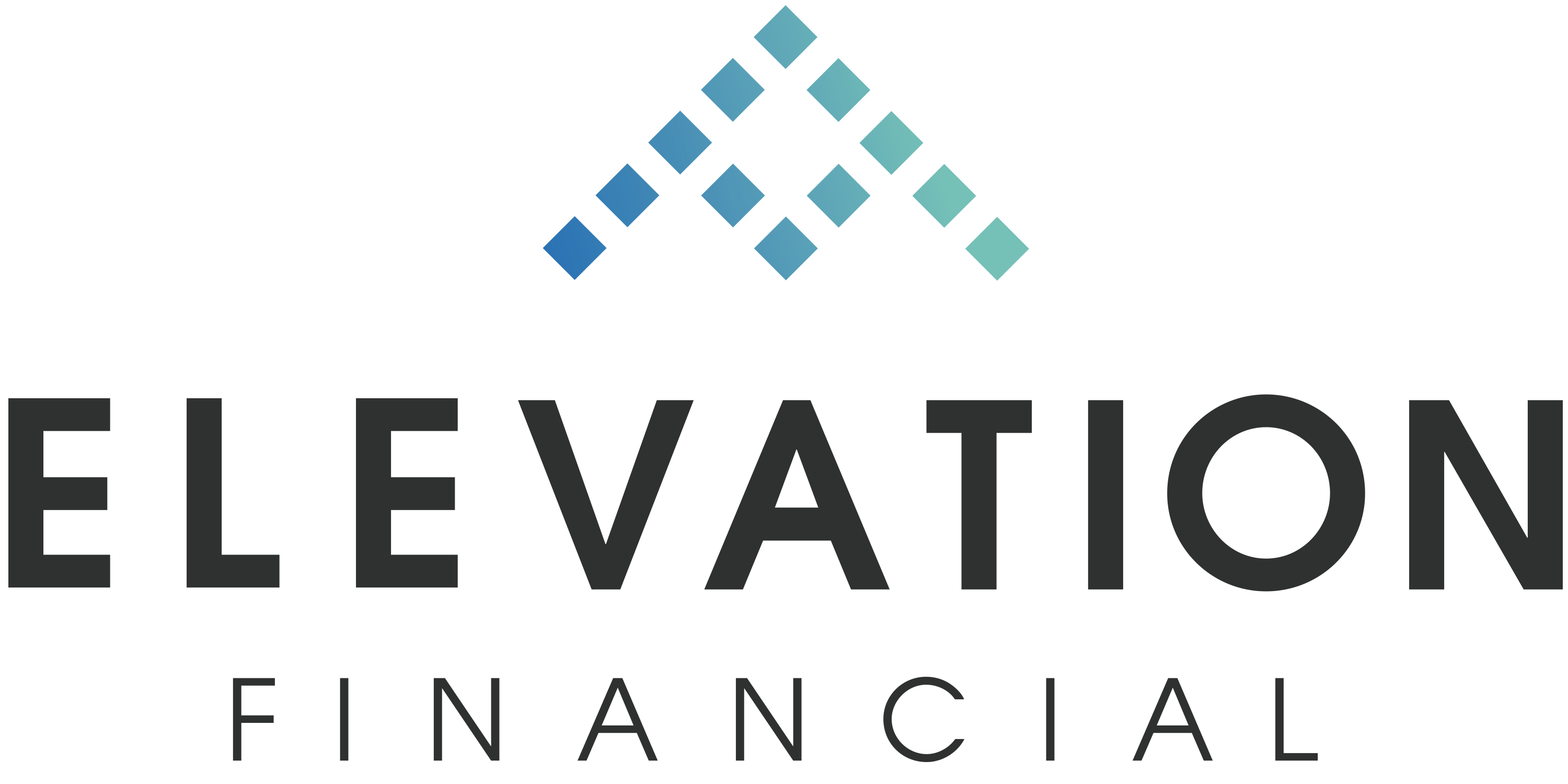
Share this Post
Subscribe

Need help with your money or investments? Book a consultation to learn more about working together.
How I Organize My Bank Accounts (A Blueprint for Structured Banking)
If I were to ask you what the most important factors are in determining how successful you are with money, what would come to mind? Picking the right investments? Getting out of debt? Saving money?
All of these things are important. But I would argue that above all, being intentional with your money ranks at the top of the list and is the driving factor that supports everything else you do.
Being intentional with your money means paying attention to it. Directing it. Thinking carefully about how it flows into and out of your life. Being thoughtful about how you organize it.
As I work with clients, I find that many people oversimplify their financial structure. While I'm a huge fan of simplicity and I shy away from over-complicating things, in this case I think most of us could stand to add a little bit more complexity to the way we organize our bank accounts and how it applies to the budget.
So this outline is mainly for my clients as I work with them. I like to have a clear explanation of the bank accounts I recommend as we set up financial systems and money flow. But it also applies to anyone else who wants to be a little more intentional about how their money flows.
Introduction
Before getting to the individual accounts, I want to explain how this simple structure works and why I recommend it. The idea behind this structure is that we want one main operating account for money to flow in and out of. This is our main operating account. This is the account that you want to link to your budgeting software (I recommend You Need a Budget - YNAB).
You do not connect any other bank accounts to your budgeting software. Only the operating account. All other accounts are designed to hold money for specific purposes.
I also recommend having most of these accounts at different banks and I will share what banks I use. The reason for this is that there is value in creating barriers between accounts to help retain discipline. If all your accounts are at the same bank, it's too easy to move money from your emergency fund or tax account into checking and use it for an impulse buy, thus defeating the purpose of the account. When your money is at different banks, it takes 2-3 days to transfer which creates a barrier to accessing it.
There are some other advantages to having multiple banks as well, which will become clear as we go.
Also, note that I don't use credit cards. If you are a heavy credit card user and don't plan to change, this will likely not be very useful for you.
Here are the accounts I use.
Operating Account — Local Bank or Credit Union
This is my main operating account and I recommend that this be a local brick and mortar bank or credit union with a branch that you can walk into. I think it's important to have access to a local physical bank. You may rarely use it but it's handy when you do. At some point, you may have a need to deposit cash, or get a cashier's check or send a wire. In these cases, a local bank can be very convenient.
Look for a local bank that is small enough to be personal but large enough to have decent technology.
If you combine finances with a partner, this can be a joint account with individual debit cards.
Short-term Savings — CapitalOne 360
Your short-term savings handles two scenarios: your emergency fund and your sinking fund. Your emergency fund should be at least three to six months of expenses. On top of that, you also want to have a sinking fund for large purchases. Examples would be saving up for a car, a down payment on a home, a large appliance, furniture or a home improvement project. This is stuff that is large and out of the ordinary.
Why combine the emergency fund and sinking fund into one account? Because it all ends up being basically the same money. You might think it should be separate but think of a scenario in which you would need to use your emergency fund. Once you use it, your sinking fund effectively becomes your new emergency fund to replace it and then you're back to building up your sinking fund so you might as well keep it all in one account.
I use CapitalOne 360 for this account. I actually set up two accounts: a basic checking with a debit card and then a savings account that holds the actual short-term savings. I do this because I want the interest rate of the savings account, but I want to be able to access the funds with a debit card when needed. I'm able to move money from the savings account over to the checking account in a pinch and then I can use my debit card for the purchase or to cover the emergency.
This is also my gifting and giving account. Guess what happens every year? Holiday season! Yet many of us seem to get caught by surprise every time when we find that we want to buy gifts for people but neglected to plan for it. This is where a short-term savings account with a portion labeled for giving & gifting comes in handy. Aside from the holidays, it's also nice to be able to spontaneously contribute to your friend's charitable cause, the local school fundraiser or a relative's GoFundMe when the spirit moves you.
If you combine finances with a partner, this can be a joint account with individual debit cards.
Travel & Vacation — Ally Bank
My travel and vacation account is pretty self-explanatory. This is to help you plan stress-free vacations! At least from a financial standpoint. I've found that among all the things that can suck away cash flow and get people into debt, vacations are at the top of the list. I've seen so many people end up strapped and further in debt as a result of vacations.
This can be avoided by establishing a travel and vacation account. I use Ally Bank for this, and specifically, the Interest Checking Account with a debit card. I like Ally for this because they have great 24/7 customer service for when you're traveling, the mobile app is great and has excellent card controls to minimize fraud and the debit card is purple which is just fun.
Having a travel and vacation account is great for reducing financial stress related to vacations. Each month you put some money into this account and then when you want to take a vacation, your budget is simply whatever you have in this account. Want a bigger vacation? Save more each month into this account.
Another nice feature of a separate account for travel is that you are only exposing this account. If your card gets lost or stolen or incurs fraud, your primary accounts are not exposed. Only this one account is exposed which is a layer of security.
If you combine finances with a partner, this can be a joint account with individual debit cards.
Tax Account — Wealthfront
If all your income is through payroll as an employee, then you can skip this account. However, if you're an entrepreneur or self-employed then you are likely aware that you will need to pay quarterly estimated taxes. Much like the holidays, quarterly estimated tax payments can sneak up on us and wreck our cash flow if we don't plan for it.
Setting up a tax account is a great way to squirrel away some money each month for these payments. It's a great feeling to be able to pay those quarterly estimates without missing a beat in your day to day operations.
I like Wealthfront for this account. It's all online and it links to other accounts just fine so you can move money into it. No debit card needed. When you pay your state and federal estimates, you simply plug in the account numbers online via the IRS website and your state website and make the payments.
If you combine finances with a partner, this can be a joint account.
Fun/Personal Money — Venmo with Debit Card
This account is a bit more tuned toward those in committed relationships who combine finances. If you're single or you keep your finances individual, this may not be an account that you need. But if you are in a combined relationship, then this can be a great way to work as a team but also maintain complete autonomy over a portion of your finances.
This account is for stuff that you just want and that would likely be classified as "luxury" or "treating yourself" or for buying stuff for pure fun that is all about you. While I love the idea of combining finances when you are married, I also know that having some money that is just for you and no one else can be a great feeling.
I like the Venmo account with debit card for this. Each person gets a Venmo account and orders a debit card. Then, move money into the accounts each month and you both have individual fun money accounts for whatever you want. How much you want to put in these accounts is up to you to decide as a couple.
Side note: this is a model that works well for couples that have a "combined finance" mindset. Other couples may want to approach it from another direction and keep things mostly separate or do a hybrid approach and Venmo is not robust enough to handle these cases. That will likely be covered at another time.
An Operational Banking Structure
This outlines my basic banking structure. As we wrap up, let's cover some frequently asked questions.
Q: This seems like a lot of debit cards to carry around! Won't it break my wallet?
A: Nope! You won't carry all these cards around at once. I keep most of these debit cards in a lockbox at home and typically just carry my main operating account card. When I'm on vacation or need to book a trip, I carry my travel & vacation card. When I need to access my short-term savings, I grab that one. The point of keeping all these accounts separate is to create intentional segmentation. Plus, you can always add the cards to your touch pay app on your phone in a pinch.
Q: Ok, but this seems really confusing to keep track of. Won't I get annoyed with all these banks?
A: It's really not confusing, I promise. Once you start to compartmentalize accounts for specific purposes, it will become very clear and you'll never want to go back.
Q: Really?
A: Really.
I encourage you to give this structure a try. You may even want to customize it for your needs if you have other categories that you want to segment. Though it may seem like a little more work up front, this banking structure can go a long way toward helping you manage your money with intention and purpose.
